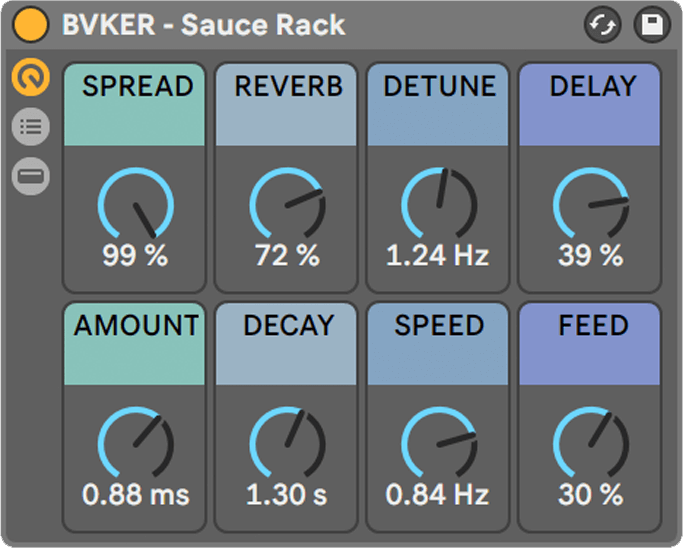

The sounds of the universe continue to manifest as inspiration in contemporary work. The musical drone can be understood both as a depiction of this sacred cosmic din, and as a way to connect with it. This is the idea that the divine is found as sound waves in the vibration of the universe itself. In passing, Ami touches on a notion that’s found in many Indian religions, and is often referred to by the Sanskrit expression Nada Brahma – most often translated as “sound is God”. “I tried to get these gritty, noisy artefacts, attacking the strings a little more harshly, or softly, or playing with the bowing speed to slow it down and draw it out so you hear more artifacts when you play.” A dilruba, which she borrowed from her mother, was subjected to similar treatment.
#CYMATICS ABLETON EFFECT RACKS FULL#
Ami also recorded a harmonium, making full use of its microtonal range – while western harmoniums can usually only play the chromatic (12-tone) scale, modified harmoniums can play all 22 shrutis (microtones) common in Indian classical music.įor recording the sitar, she opted for untraditional methods, employing an EBow to draw longer sounds from the instrument. In Drone Lab, you’ll find a Rack that makes use of samples of the e-tanpura, alongside individual, processed recordings of its output. Or the drone will just be present in the house, which is nice.” It’s also a good way to get into a musical headspace – “Sometimes I’ll switch it on while I’m cooking dinner and I’ll sing along to it. The drone is easily set and changed, producing a pitch that can be used for tuning, improvising and performing over. As a solo artist, Ami uses the Raagini Digital, an electronic version of the tanpura that’s popular for its convenience.

But in the Indian classical tradition, the plucked instrument is often played over the drone of the tanpura – an overtone-rich, fretless, four-stringed instrument responsible for the long-held bass notes that determine the music’s harmonic foundation. Now, she fuses sitar, voice and electronics to create ‘East-meets-West, ambient and beat-driven psych’.Īmi’s primary instrument, the sitar, is staccato by nature. Ami grew up in a Sikh-American household in Baltimore where drone-led devotional music could often be heard playing on the stereo. I think bridging that connection is crucial,” explains composer and producer Ami Dang. “Drone is an ancient concept and tradition, but we hear drones all the time today – our present is filled with the drone of industrial noise. Here, some of the Pack’s contributing artists explain the methods and intentions behind their work. The immersive potential of the drone is harnessed in Drone Lab – a collection of tools and sounds created for Live 11, designed to let you play with momentum and dynamics, explore and improvise with microtonality, and even practice meditation and sonic healing. “Bodily sounds – the rushing of the blood, the beating of the heart, the gurgles of the digestive tract – are not merely perceptible to a foetus in utero, but heard, loud and clear.” This gestational soundscape can register as loud as 88 decibels, and might begin to explain why so many of us find serenity in drawn-out tones. In the book, he suggests that the human attraction to persistent noise begins in the womb. Published earlier this year, music writer Harry Sword’s Monolithic Undertow took readers on a journey across the history and cultural context of drones in music and the world. The many branches of drone as a genre of music can launch a listener into a meditative state – even a particularly abrasive noise concert is said to provide comfort to an audience in search of catharsis. Today, drone-based ASMR video playlists are advertised as productivity hacks, while traditional sound meditation practices such as gong baths have seen a significant rise in popularity. On a basic level, they’re just long-held or continuous notes and tone clusters, but the belief that these sounds hold some transformative power spans communities, continents and generations. Drones have existed in sound-making for centuries.


 0 kommentar(er)
0 kommentar(er)
